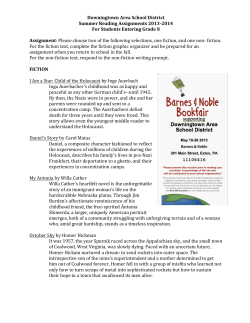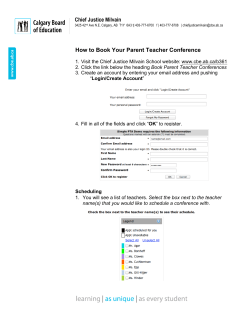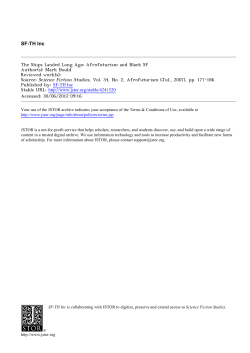
How to Implement IDR
How to Implement IDR Setting Up the Leveled Library in the Classroom SE T T I NG U P T H E L EV EL ED L I BR A RY I N T H E CL A SSROOM The ideal classroom library consists of 300–400 titles, including a balance of fiction and nonfiction books. Many teachers start with a smaller collection and add to it over time. To address various reading levels, at least 25 percent of the library should be books one to two grades below grade level (IDR Library level: Easy), and at least 25 percent should be books one to two grades above grade level (IDR Library level: Challenging). Organizing the Library You will want to organize the library for ease of browsing and to draw your students’ attention to a variety of books and genres over time. Many teachers group books by category and display them in labeled boxes or baskets. For example, categories might include: UÑ iÅiÈѲw ÅÑiæ>°i]ÑçÈÓiÅç]ÑÈViViÑxVÓ ]Ñw Ó>i]ÑL Å>°ç³ UÑ -ÞLiVÓÈÑ ÅÑÓ °VÈѲw ÅÑiæ>°i]Ñ°ÅiÈ`iÓÈ]Ñ>>È]Ñåi>ÓiÅ]ÑÈV ³ UÑ /iiÈѲw ÅÑiæ>°i]Ñw>Å>å>çÑ°>ViÈ]ÑwÅi`È°]ÑÅ åÑÞ°³ UÑ >ä ÅÓiÑ>ÞÓ ÅÈÑ ÅÑÞÈÓÅ>Ó ÅÈ UÑ * °Þ>ÅÑÈiÅiÈ UÑ -ÓÞ`iÓÑw>ä ÅÓiÈ Photo © Ereloom Studios 6 Individualized Daily Reading Support Handbook Setting Up the Leveled Library in the Classroom While a book’s level is an important factor in the classroom library, we do not recommend categorizing books overtly by level (that is, creating boxes of books labeled “Easy,” “Onlevel,” or “Challenging”), as students can be sensitive about their reading ability in relation to peers. Instead, we recommend providing leveling information in a discreet way by placing a color-coded adhesive dot on the inside front or back cover of each book. This allows a student to initially assess a book by his level of interest in the book, and secondarily by the book’s reading level. This method helps communicate the message that none of the books in the library are “off limits;” the students are free to look at any book they like at any time except during IDR, when everyone will practice reading at his own just-right level (see “Helping Students Get into the Right-level Books” on page 9 for more information). Adding Books to a Leveled Library While the DSC IDR Library books are already leveled for you, there may be other books, not yet leveled, that you want to add to your classroom library. We provide the following information to help you with the sometimes challenging and time-consuming process of leveling books. (More information about leveling can be found in Brenda M. Weaver’s Leveling Books K–6: Matching Readers to Text.) t The Fountas and Pinnell Leveling System Educators Gay Su Pinnell and Irene C. Fountas developed a leveling system for use with Guided Reading groups. This system is frequently used for leveling independent reading libraries. They provide lists of thousands of leveled books for grades K–8 in their book Leveled Books, K–8: Matching Texts to Readers for Effective Teaching (Heinemann, 2008) and on their website, www.fountasandpinnellleveledbooks.com. t The Lexile Framework This leveling system uses a sophisticated computer formula to determine text difficulty, which it represents as a Lexile measure. Educators often informally use Lexile measures to place books at different grade levels. For example, a text with a measure of 400L would be placed at an average reading level for grade 2. The developer of the framework, MetaMetrics, Inc., has created a database of more than 30,000 Lexile-leveled titles plus tools that allow teachers to search, sort, and view details on the titles. For more information, visit the Lexile Framework for Reading website at www.lexile.com. How to Implement IDR 7 Establishing Procedures and Expectations for the IDR Period E S TA B L I S H I N G P R O C E D U R E S A N D E X P E C TAT I O N S F O R T H E I D R P E R I O D Take time at the beginning of the year to teach the students your expectations for Individualized Daily Reading and the procedures you would like them to follow when using the classroom library. Start by gathering the students in the library area and explaining what IDR is. Emphasize the importance of independent reading practice in books at each student’s right reading level. Show and discuss how the books in the library are organized, and explain how to look for leveling information (such as the color-coded adhesive dot inside the cover). Tell the students that you will work with them individually to help them figure out what books are at the right level for them (see “Helping Students Get into the Right-level Books” on page 9). Photo © Ereloom Studios Explain how you expect the students to take responsibility for the classroom library. For example, you might mention the importance of handling books gently and returning them to the proper box when finished. As a class, discuss questions such as: Q What else will you do to handle the books in our classroom library in a responsible way? Q Why is it important for each of us to take responsibility for the classroom library? 8 Individualized Daily Reading Support Handbook Helping Students Get into the Right-level Books Explain that prior to the IDR period the students will have a chance to browse the library and gather the books they will read, but once IDR has begun, you expect the students to read quietly and independently for the entire period, without talking, whispering, or walking around. Reinforce these expectations during the first several IDR periods by interrupting the class, if necessary, to restate your expectations for quiet, independent reading. You might also join the students for a few minutes of independent reading before commencing IDR conferences (see “Conducting IDR Conferences” on page 11). Be sure to set a consistent routine for IDR in your classroom. Schedule at least 30 minutes of IDR every day, if possible. Make sure to provide time beforehand for the students to gather books and encourage them to gather multiple books, if necessary, to last them through the entire IDR period. Let the students know that they may keep these books until they are finished reading them, at which time they should return the finished books to the appropriate place in the library and get new books. At the end of each IDR period, consider taking a few minutes to ask a few volunteers to share their books with the class by showing the cover, saying the title and author, and briefly telling what the book is about. H ELPI NG ST U DEN T S GET I N TO T H E R I G H T- L E V E L B O O K S The benefits of having students practice reading in books at the appropriate reading level are well substantiated by Richard Allington (Allington, 2001) and others, as are the cumulative negative effects when students are consistently asked to read texts that are too hard for them. As students practice reading books at the right level, they increase their fluency and academic vocabulary and become naturally able to comprehend more challenging text over time. Informal Assessment During IDR, the students must be reading books they can comprehend and read fluently with few miscues (accuracy errors). Early in the year, informally assess each student’s reading level by having the students select books that interest them and then listening to each student read aloud. Note whether the student is reading with accuracy (reading most of the words without miscues) and understanding. To gauge a student’s surface understanding, use prompts and questions such as “Tell me what you just read” or “What does that mean?” Students who read fluently, with comprehension and engagement, are likely reading texts that are at the right level for them. Students who miss five or more words per page, read very slowly, or have difficulty retelling or summarizing what they just read are likely reading texts that are too difficult for them. Conversely, students who breeze through texts very quickly or seem disengaged with what they are reading may be reading texts that are too easy. How to Implement IDR 9 Helping Students Get into the Right-level Books If a student is reading a book that is at the right level, point out the color-coded dot on the inside cover of the book and explain that you would like her to read other books with the same color dot during IDR. If the student is reading a book that is too difficult or easy, help her select a more suitable book and point out the dot color of the books she should be reading. Photo © Ereloom Studios The “Five-finger Rule” A simple technique for evaluating the appropriateness of a book is the “five-finger rule.” As a student reads a page aloud, count any words he doesn’t know. More than five unknown words on a page usually indicates that the book is too difficult. When your students become familiar with the five-finger rule, you can encourage them to use the technique on their own, making them responsible for checking the appropriateness of the books they choose for IDR. It is very important for the students to build reading fluency as a foundation for comprehension. If you have students who are reading far below grade level, make sure they have time every day to practice reading decodable texts, and check in regularly to monitor their rate and accuracy. Developmental Studies Center’s SIPPS® (Systematic Instruction in Phoneme Awareness, Phonics, and Sight Words) program provides more information about building fluency and monitoring reading rate and accuracy. 10 Individualized Daily Reading Support Handbook Conducting IDR Conferences CON DUC T I NG I DR CON F ER ENCE S As mentioned in the previous section, you should confer with individual students early in the year to ensure that they are reading appropriately leveled books and to get to know them as readers. As the year progresses, your conferences will focus more on assessing the students’ comprehension, supporting struggling readers, and encouraging self-monitoring strategies. With IDR conferences, the expectation is not that you will have read all the books the students are reading. The conference structure suggested below is designed to be effective with any book, fiction or nonfiction, whether you are familiar with it or not. A Structure for IDR Conferences We recommend that you hold IDR conferences at a desk or table set apart from the rest of the class. Call individual students to the table so your conferences do not distract other students from their reading. Plan to spend 10–15 minutes per conference, and plan to confer with each student multiple times over the year. (See BLM1, “IDR Conference Class Record Sheet,” at the end of this book, for a way to keep track of when you have conferred with each student.) The following is a possible structure for an IDR conference: Initiate Briefly scan the back cover blurb of the book the student is reading (for your own information), then begin the conference by asking the student to tell you about the book. Ask her to tell you what is happening in the part she is currently reading. Listen to the Read-aloud and Assess Have the student read aloud from where she is currently in the book. Listen for fluency and make note of any miscues. Ask yourself: t Does the student attend to meaning? t Does she pause or reread if she’s having difficulty? t Does she read most words accurately? t Does she try to make sense of unfamiliar language? t Does she read fluently? t Is this book at the right level for this student? If not, is it too easy or too hard? How to Implement IDR 11 Conducting IDR Conferences After the reading, ask and discuss: Q What is happening in the part you just read? If it seems that the student is not in the right-level book, skip Step 3 and proceed to Step 4. Discuss the Book Notice where the student is in the book and target your discussion based on that and the book’s genre. For a fiction book, if the student is: t At the beginning of the book → Ask questions about character. t In the middle of the book → Ask questions about character and setting. t In the middle to end of the book → Ask questions about plot. For example, if the student is near the beginning or middle of a fiction book, ask questions such as: Q Who is the main character of your story? What are you finding out about [him/her]? Read me a section that tells you what this character is like. What does this section tell you about [him/her]? If the student is near the middle of a fiction book, ask questions such as: Q What is the setting of your story (or where and when does this story take place)? Read me a section that tells you what this setting is like. What do you imagine when you read that? If the student is in the middle to end of a fiction book, ask questions such as: Q What problem is the main character having in this story? What has happened so far with this character and this problem? How does the problem get solved? In some cases, you may be able to extend this discussion to include questions about significant events at the end of the book. 12 Individualized Daily Reading Support Handbook Conducting IDR Conferences For a nonfiction book, if the student is: t At the beginning of the book → Ask questions about what she is curious about and what she thinks she will learn. t Between the middle and end of the book → Ask questions about what she is learning and how she is learning it. For example, if the student is near the beginning or middle of a nonfiction book, ask questions such as: Q What have you learned so far about this topic? What are you curious about? Let’s look at the table of contents. What do you think you will learn about in this book? If the student is between the middle and end of a nonfiction book, ask questions such as: Q What have you learned about this topic so far? Let’s read a little from this [sidebar/ caption/glossary/index/other text feature]. How does this information help you better understand the main text? Discuss Book Level Have the student assess the level of the book for herself by asking: Q Does this book feel like it is at the right level? If so, how do you know? If not, why not? If the book is at the right level, point out the code indicating the level (for example, the colored dot) and encourage the student to continue to read books at this level. If the book is not at the right level, help the student find a more appropriate book (perhaps by pulling 2–3 titles at the correct level from which she may choose) and plan to confer with the student again in the next day or two after she has begun reading the new book. You can document your observations using the “Record Sheet for IDR Conferences” tear-off pad. (A blackline master is also provided in this book.) Over time, these notes can become an important source of information about each student’s development as a reader. The sample IDR conference booklets we have included in this kit give more specific examples of how you might use this structure with a fiction and a nonfiction book from the IDR Library for your grade. Adaptations of the conference for grades K and 1 are given in the sample conference booklets at those grades. How to Implement IDR 13 Conducting IDR Conferences Some Considerations for Conferring with English Language Learners English Language Learners, like all children, come to the classroom with a wide variety of reading ability and experience with the world. They also come with various degrees of English proficiency. You can support their reading comprehension during IDR conferences by making sure they are reading books with vocabulary they can access and by using strategies such as those that follow: UÑ * ÓÑ ÞÓÑ>`Ñ`ÈVÞÈÈÑåÓÑÓiÑÈÓÞ`iÓÑw Å>Ó ÑÑÓiÑL ÂÈÑÞÈÓÅ>Ó Èµ UÑ >äiÑÓiÑÈÓÞ`iÓÑ`iÈVÅLiÑÓiÑ°VÓÞÅiÑLiw ÅiÑÅi>`ÑÓiÑÓiæÓµ UÑ *Å ä`iÑ °° ÅÓÞÓiÈÑw ÅÑÓiÑÈÓÞ`iÓÑÓ Ñ`i ÈÓÅ>ÓiÑÞ`iÅÈÓ>`Ñ äiÅL>çѲw ÅÑ example, by pointing or making a sketch). UÑ ,iÈÓ>ÓiÑ>`ÑiæÓi`ÑÓiÑÈÓÞ`iÓÂÈÑ iÑ ÅÑÓå å Å`Ñ LÈiÅä>Ó ÈµÑ² ÅÑiæ>°i]ÑwÑÓiÑ student says, “Snow,” you might respond, “Yes, the train is traveling in the snow. The train pushes the snow out of the way.” You can point to the train’s plow and show a pushing gesture as you speak.) UÑ >iÑiæ°VÓÑV iVÓ ÈÑLiÓåiiÑÓiÑÓiæÓÑ>`ÑÓiÑÈÓÞ`iÓÂÈÑ°Å ÅÑiæ°iÅiViѲw ÅÑ example, you might say, “This train is from Japan. Have you ever seen one like this?”). Photo © Ereloom Studios 14 Individualized Daily Reading Support Handbook Conducting IDR Conferences For the Teacher: Recognizing Important Aspects of Text If reading, at its core, is an intimate communication between author and reader, then the challenge and excitement of an effective IDR conference lies in helping the student gain both a surface-level comprehension of the story (what’s happening) and an understanding of how various things relate in the context of the book as a whole. In fiction, this might mean recognizing how the author is orchestrating elements such as character, setting, conflict, resolution, and plot in the story to show how a character changes or grows as a result. In nonfiction, it might mean understanding both the factual information being presented and the author’s intent in organizing the book as a whole. As the teacher, this requires both an understanding of literature and the ability to make judgments about what is important for a student to be thinking about, at his own reading level, as he reads. What’s Important in Fiction While your conversation about a fiction book will focus on very different things depending on whether you are talking to kindergarteners or eighth graders, it is helpful, as the teacher, to recognize some common elements of fiction that appear in any story. In most juvenile fiction, from the simplest picture book to more sophisticated chapter books, the author usually introduces a main character. Sometimes this main character tells the story himself or herself, from a first-person point of view (“I”), while at other times the main character is described by an outside narrator using the third person (“Mary”). In either case, the reader usually experiences the story solely through this character’s eyes and emotions (although occasionally the author uses a point of view that gives us access to the minds and perceptions of multiple characters). Through the character’s thoughts, actions, and interactions, the reader gets to know something about how this character operates and often begins to feel a kinship or sympathy for him or her based on common human traits. The character is placed in a setting consisting of a time and place, which could be as varied as a kindergarten classroom, a modern-day suburban family, a tenement in the early 1900s, or a futuristic world in outer space. Within the first third to half of the story, the main character’s central conflict is usually introduced. The conflict can be a problem with another character, an obstacle to a goal, an internal struggle between right and wrong, or any number of experiences that grieve us in real life. The subsequent events in the plot build the conflict until a climactic event occurs toward the end of the book, which leads to a resolution of the conflict, and often to a change, realization, or maturing on the part of the main character. Stories sometimes include subplots as well, in which other characters experience conflicts of their own. In a well-crafted story, as in life, the subplot will often intertwine with the main plot of the story. How to Implement IDR 15 Conducting IDR Conferences What’s Important in Nonfiction As with fiction, it is helpful as the teacher to recognize some common elements of juvenile nonfiction, as recognizing these elements will help you choose appropriate questions during conferences. Nonfiction for young readers comes in many different forms and can include memoir, biography, autobiography, historical nonfiction, and factual books about science and other topics. Nonfiction can be expository (explanatory), functional (how-to), or narrative (told like a story). Juvenile nonfiction can even resemble fiction due to hand-drawn illustrations and its writing style (such as the use of the second person “you”). In general, nonfiction gives factual information and is often accompanied by text features such as photographs with captions, diagrams, sidebar text, a table of contents, a glossary, and an index. In well-written nonfiction, the information is related both in terms of the facts themselves and how the information is organized. Information may be organized chronologically (first this happened, then this happened…) or by order of significance (big ideas first, followed by lesser ideas). It can be organized to highlight cause-and-effect relationships or to show comparisons or contrasts between two or more things. The information can be organized by category (for example, an animal’s body features, habitat, diet, natural enemies, and reproduction) or to expose a problem and a possible solution. Sometimes an author uses several ways of organizing information in a single text. Because it is challenging for young readers to recognize these organizational structures, instruction about them is usually reserved for older students. When reading and discussing nonfiction, the reader is invited to activate his curiosity about different topics. Curiosity leads to learning factual information about a topic, which often leads to further questions about the topic. Sometimes the reader’s questions are answered in a book and sometimes not, encouraging him to continue to seek information about that topic in other sources. Sample IDR Conferences The two sample IDR conference booklets included in this kit are meant to show how conferences with a student reading a fiction or a nonfiction book at your grade level might proceed. Each sample conference features a book from an On-level Fiction or Nonfiction IDR Library at your grade. We encourage you to read and study these samples to get a sense of how to adapt this structure to other books your students might be reading. 16 Individualized Daily Reading Support Handbook Record Sheet for IDR Conferences Student: Date: Book title: NOTES Initiate Ask: What is your book about so far? YES Is the student able to describe the book? Listen to Read-aloud and Assess Have the student read aloud a page or two from where he or she is currently in the book. Does the student: YES Attend to meaning? Pause/reread if having difficulty? Read most words accurately? Try to make sense of unfamiliar language? Read fluently? Is this book at the right level for this student? Ask: What is the part you just read about? Does the student recall what’s important in the passage? YES (If yes, proceed with Step 3. Otherwise, go to Step 4.) Discuss the Book The student is reading from the beginning middle end of the book. Ask comprehension questions. YES Does the student demonstrate understanding? Discuss Book Level Ask: Does this book feel like it is at the right level? If so, how do you know? If not, why not? © Developmental Studies Center Individualized Daily Reading Support Handbook BLM2
© Copyright 2025












